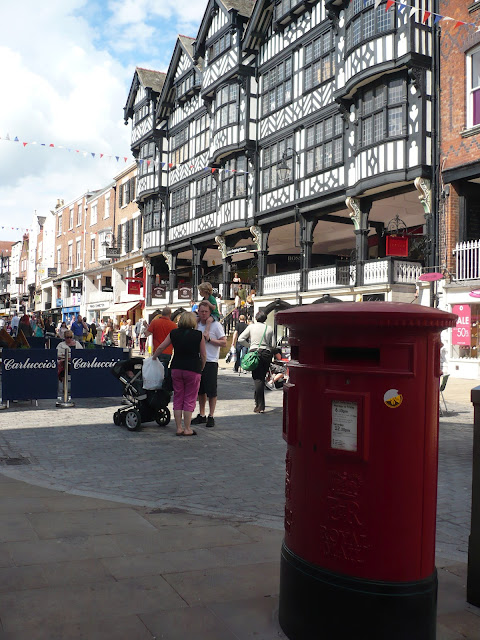An entry to
Sepia Saturday. "
Using old images as prompts for new reflections"
As a cricket fan of course I'm going for that option for this week's theme of "
sports which won't be seen at the Olympic Games", although it could be glanced for a few seconds right of at the start of the Opening Ceremony of the 2012 Olympiad in the green fields recreated in the stadium. But lets go back to the start of the 20th century with this team and what do I see. Well it seems that not everyone has turned up in their whites for the photo, something that will no doubt bring back memories of forgetting school sports bags for some of us who hadn't checked their school timetable. The boy on the left has at least remembered his cricket boots or perhaps they have played a practice match. For those not familiar with the game the wicket keeper sits gloved in the middle, if I was going to make a sweeping generalisation it would be that wicket-keepers tend to be 'characters' possibly because of the specialisation and responsibility of the role. I would guess that the man wearing the striped tie n the photo and sporting a Nietzsche type moustache is the captain. We can see the two umpires who in their white long coats who will make all the decisions on the field. The wiry and slightly dishevelled man third in from the right at the back can be nothing else but a bowler, whether fast or slow who knows but I can imagine him toiling for a wicket on a hot summers day. I can't make out the symbols on those men who are wearing cricket caps rather than the everyday flat caps so we will never know which team it is

The card was sent from Congleton in Cheshire and I thought maybe that may be the team but unfortunately I discovered that the one that resides there was not started until the 1930s. The card was sent to my Grandmother from her friend on the 15th May 1911 and says "
Thank very much for the parcel received which we enjoyed immense. Send me a bit of the lily of the valley if you have time to get any for us.
Tell Nannie I am sending the parcel off the same time I post this ". My grandmother often seemed to send flowers of the season to friends and family and a lot of the cards she kept send thanks for their receipt.. I wonder if she sent them on the train or by post.
But back to the cricket, I have happy memories of coming across a village cricket game by chance while on holiday in England, sitting talking to the locals and watching the to and fro of the match while the sun shines down. Whether watching professional or amateur matches cricket take time, hey this is a game that breaks for lunch and tea, so a good lot of eating and drinking goes on during the day for the spectators and for
 |
| "Picnic scene at Freshwater" - Photo from the Powerhouse Museum Collection, Australia |
that reason this photo is irresistible, although the accent is on the picnic and the cricket accoutrements at the back are just there for a bit of activity on a trip to the countryside, or as it is in Australia I suppose I should call it bush. The billy can at the front has "Freshwater 1895" (with the painted 9 the wrong way round), which I think is rather wonderful, the place and time frozen in time for this gathering of friends. The Powerhouse Museum has done a short montage of close ups of a few of the elements of the photo
here (It took a while to load for me but it may be my connection today). The photo being Australian brings to mind that the great rivalry of international test matches is between Australia and England
 |
| "The Queenslander,", Dec 13, 1928 (From the State Library of Queensland) |
and here is the English lion wearing a cap like the men in the postcard and the kangaroo wearing the famous Australian baggy cap. The lion is at the top of the cricket see-saw which was prophetic as England won the
series when they toured there in 1928/9 and retaining the
Ashes.







































